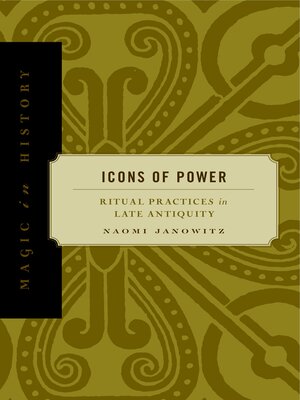
Sign up to save your library
With an OverDrive account, you can save your favorite libraries for at-a-glance information about availability. Find out more about OverDrive accounts.
Find this title in Libby, the library reading app by OverDrive.



Search for a digital library with this title
Title found at these libraries:
| Library Name | Distance |
|---|---|
| Loading... |
In the waning years of the Roman Empire, Jews, Christians, and pagans alike used rituals to bridge the gap between the human and the divine. Depending on one's point of view, however, such rituals could be labeled negatively as "magic" or positively as "theurgy." This has led to numerous problems of interpretation, including marginalizing certain ritual practices as magic or occult while privileging others as genuine or orthodox. In Icons of Power, Naomi Janowitz sifts through the polemics to make sense of the daunting mosaic of religious belief and practice in Late Antiquity.
From rabbis who ascended to heavenly places, to sorcerers seeking to harm enemies with spells, to alchemists working metals to purify the soul, Janowitz reveals how ritual practitioners held common assumptions about why their rituals worked and about how to perform those rituals. Indeed, such assumptions were so much a part of the inherited mentality of the age that they were, for the most part, never explained—and this is precisely what Janowitz accomplishes in Icons of Power. By shifting the discussion out of the rhetoric of "magic" or "mysticism" and describing the mechanisms of ritual with semiotic terms, she moves us beyond the value-laden terminology of ancient polemicists and modern scholars so that we can better see how these rituals worked and how they affected the social identities of their followers.
Janowitz recovers a lost world of religious expression that has been clouded by misinterpretation for many centuries. In the process, Icons of Power makes an important contribution to our understanding of society in Late Antiquity.







